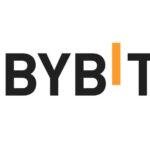With new technology and innovations continuously influencing how businesses communicate with their customers, the world of digital marketing is always changing. In this light, Web 3 is impacting marketing in more ways than you might think.
Web 3 marketing works to explore the internet by examining trends and new technology. Due to this, a Web 3 environment improves the user experience by providing rich and engaging advertising opportunities. Hence, marketers can benefit from this since it will help them create better-tailored advertisements. Below, we will explore some of the ways Web3 could move marketing technology forward.
Use Cases Of Web 3 Marketing
Empowering Trust and Transparency
The possibility of Web3 providing a more open and trustworthy environment for both businesses and customers is one possible advantage. The blockchain gives users more control over their data and privacy, which increases user engagement and trust in online companies. Marketers can give customers more control over their data and assure transparency in data consumption by leveraging blockchain for identity management and data storage. An increase in trust between brands and consumers can promote a more loyal customer base and a favorable brand reputation.
Enhancing Accuracy and Measurement
Another major advantage of Web3 is to deliver accurate information for digital marketing. Decentralized networks provide much more accurate user activity tracking and measurement, which helps marketers better evaluate the effectiveness of their efforts.
New Revenue Opportunities
The power of Web3 to help companies develop new revenue sources is another example of its most interesting promise. Through Web 3, businesses can design their own tokens or currencies, which they can use for transactions and loyalty programs using decentralized networks.
Boosting User Engagement
Web3 can give users more engaging and interactive experiences, which can make them more interested and loyal to a brand. For example, virtual and augmented reality are examples of new technologies that make it possible for businesses to give their customers interactive experiences.
Leveraging NFTs
Through Web 3, marketers can also use NFTs to create one-of-a-kind, limited-edition digital collectibles. This gives brands new ways to connect with customers. They can use NFTs in games, loyalty programs, and special gifts to keep customers while keeping them loyal to the brand.
Challenges Facing Web 3 Marketing
Web 3 marketing faces challenges because of the complex nature of blockchain technology; not many people understand how it works, and, in other cases, there are issues surrounding regulations. In the first place, Web 3 decentralized nature needs technical know-how, which makes implementation challenging. Additionally, regulatory uncertainty adds to the challenges. This uncertainty can make marketers unwilling to adopt it.
Conclusion
There is no doubt that Web3 and the blockchain are altering the way marketing works. This change is allowing companies to give customers more personalized and interesting experiences. Factors like the integration of NFTs, improved data protection, and transparency will shape the future of marketing. By adopting these changes, marketers can take advantage of the possibilities Web3 offers.




























